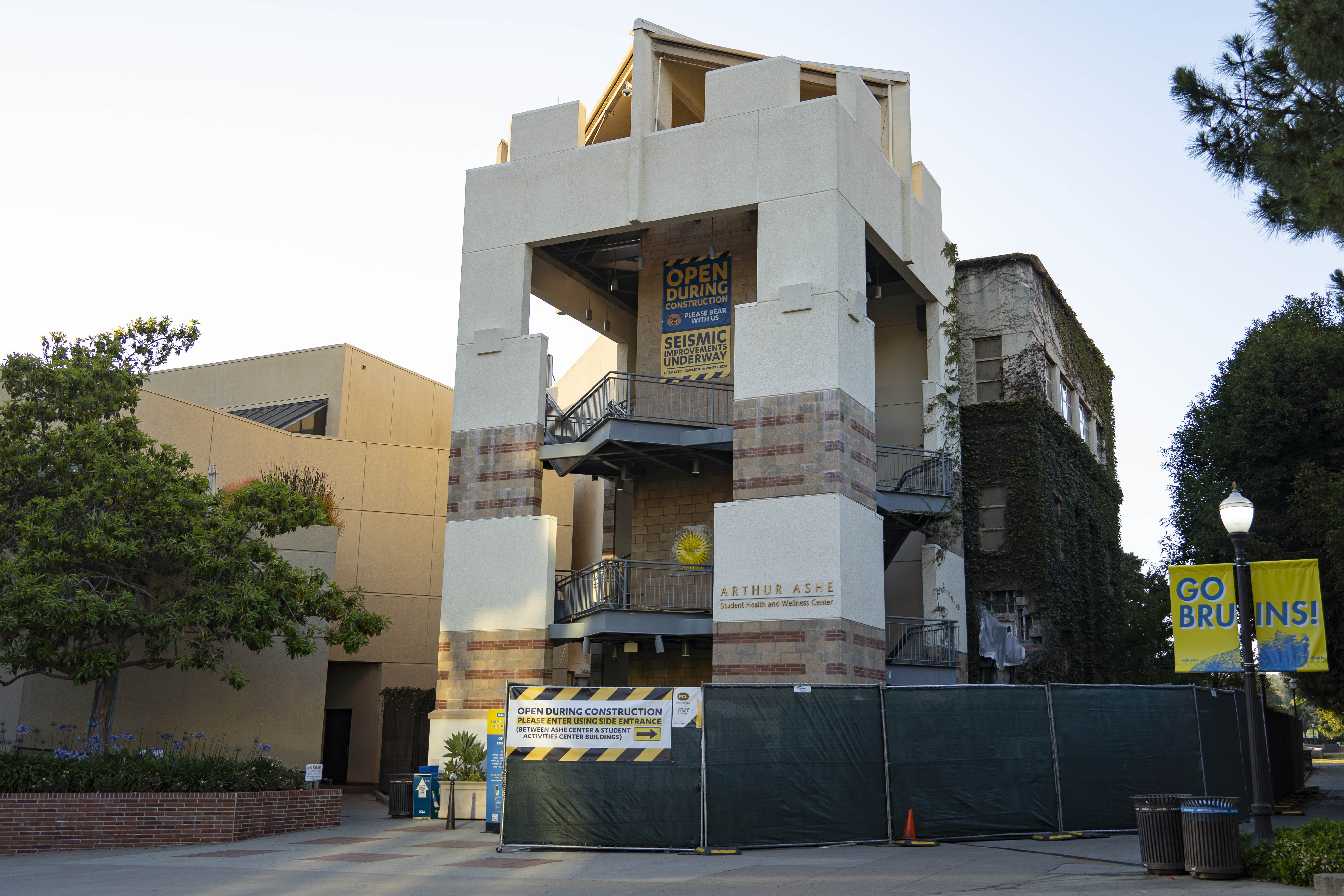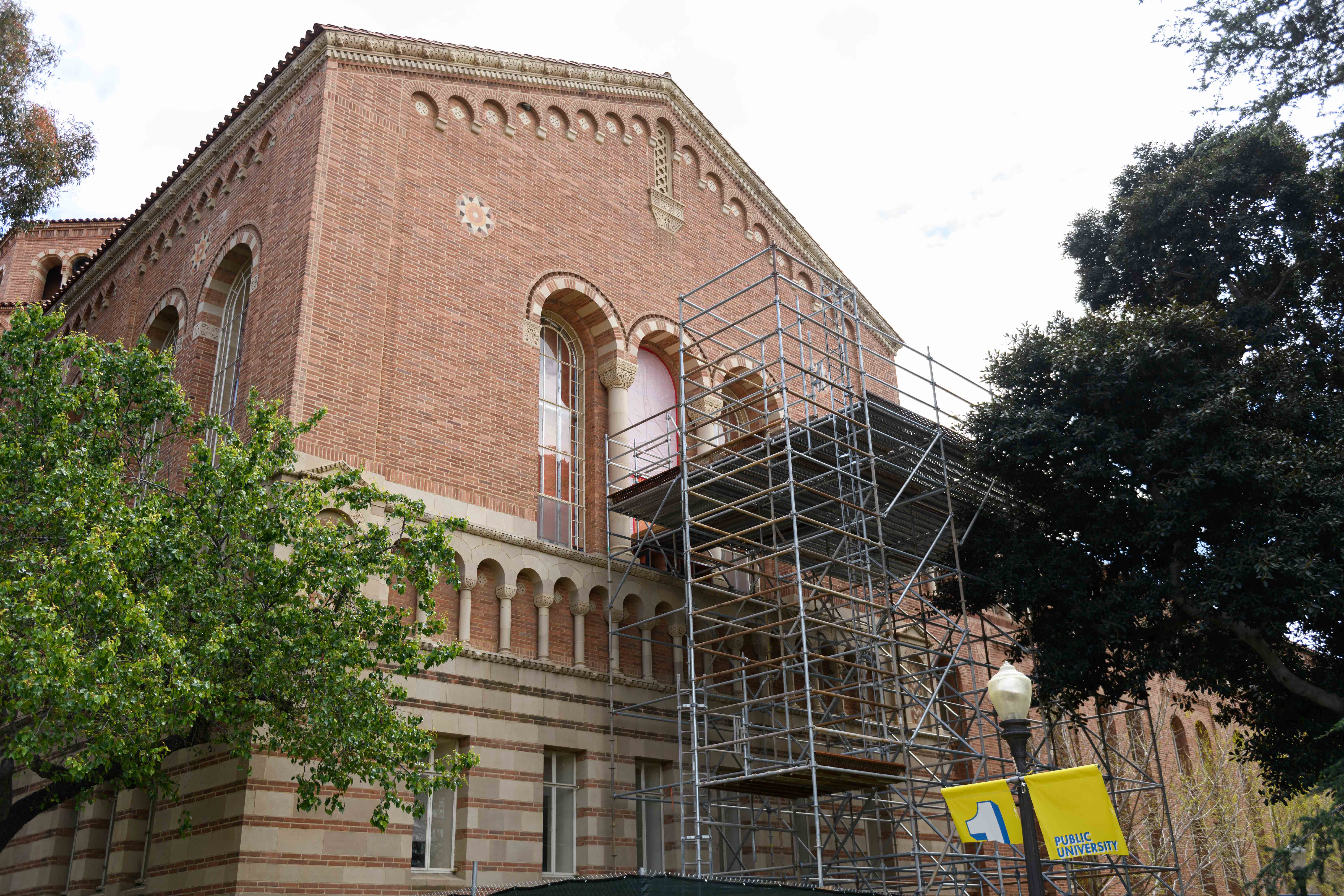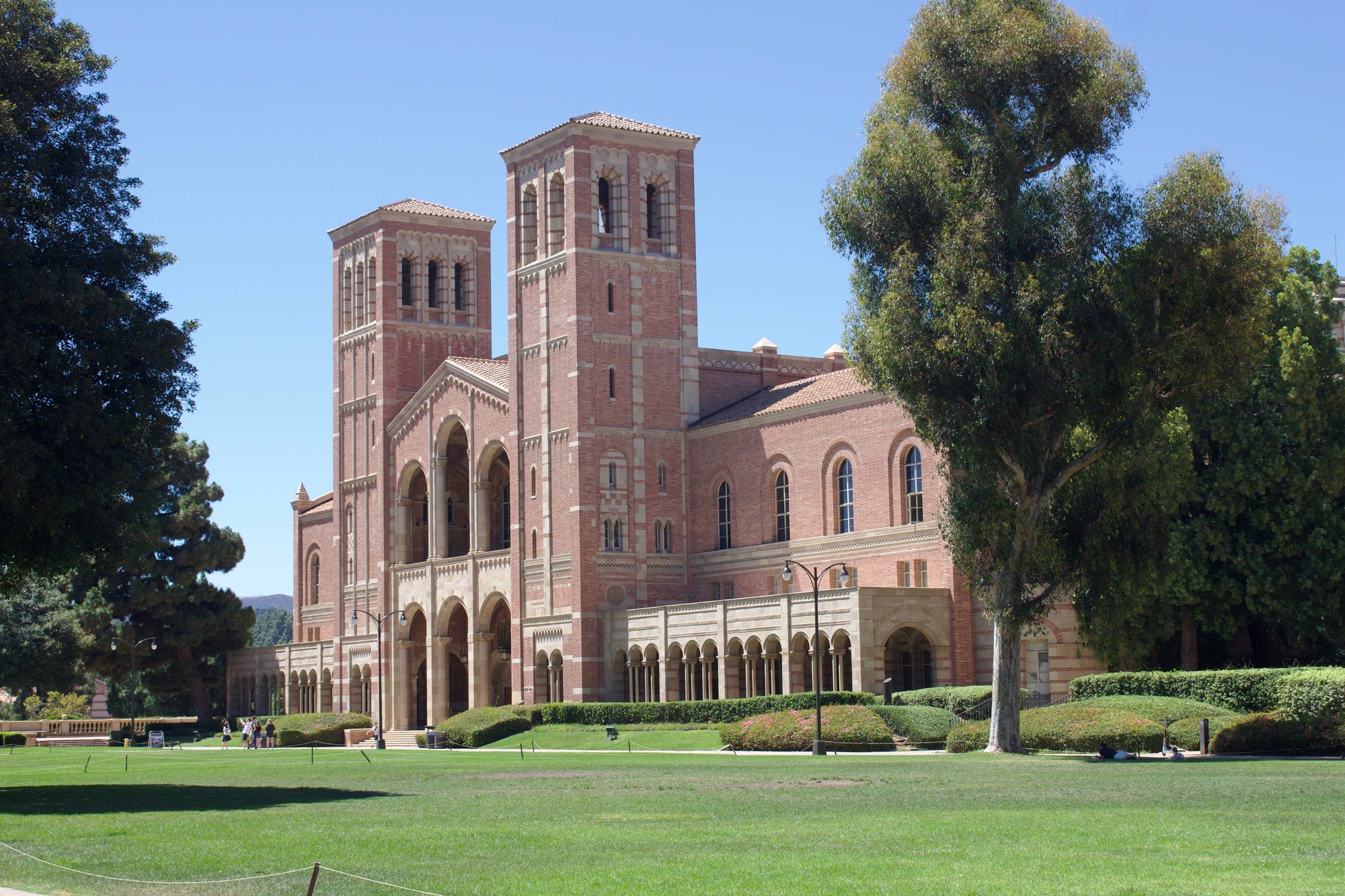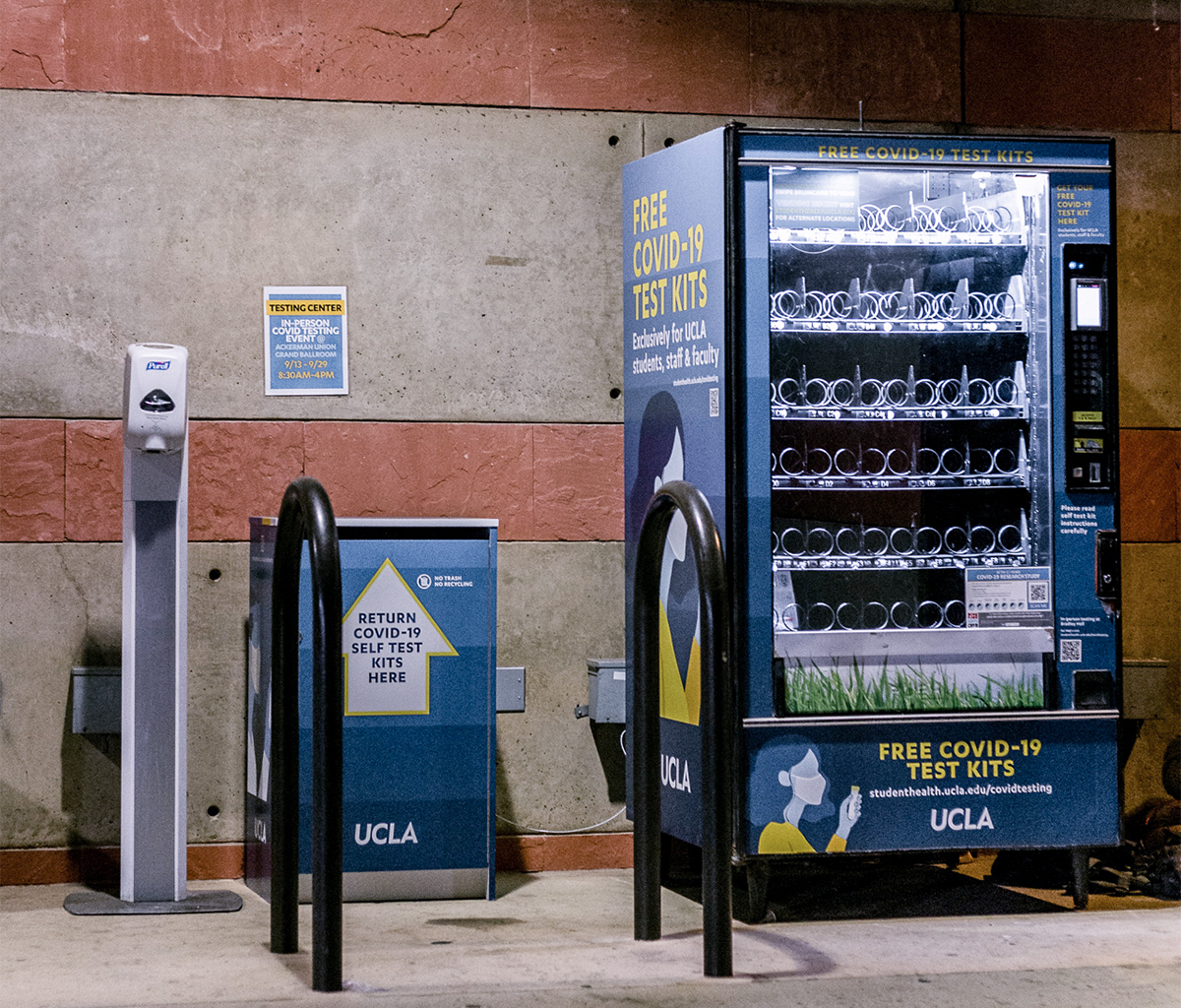Is UCLA prepared for earthquakes? Considering campus seismic improvements
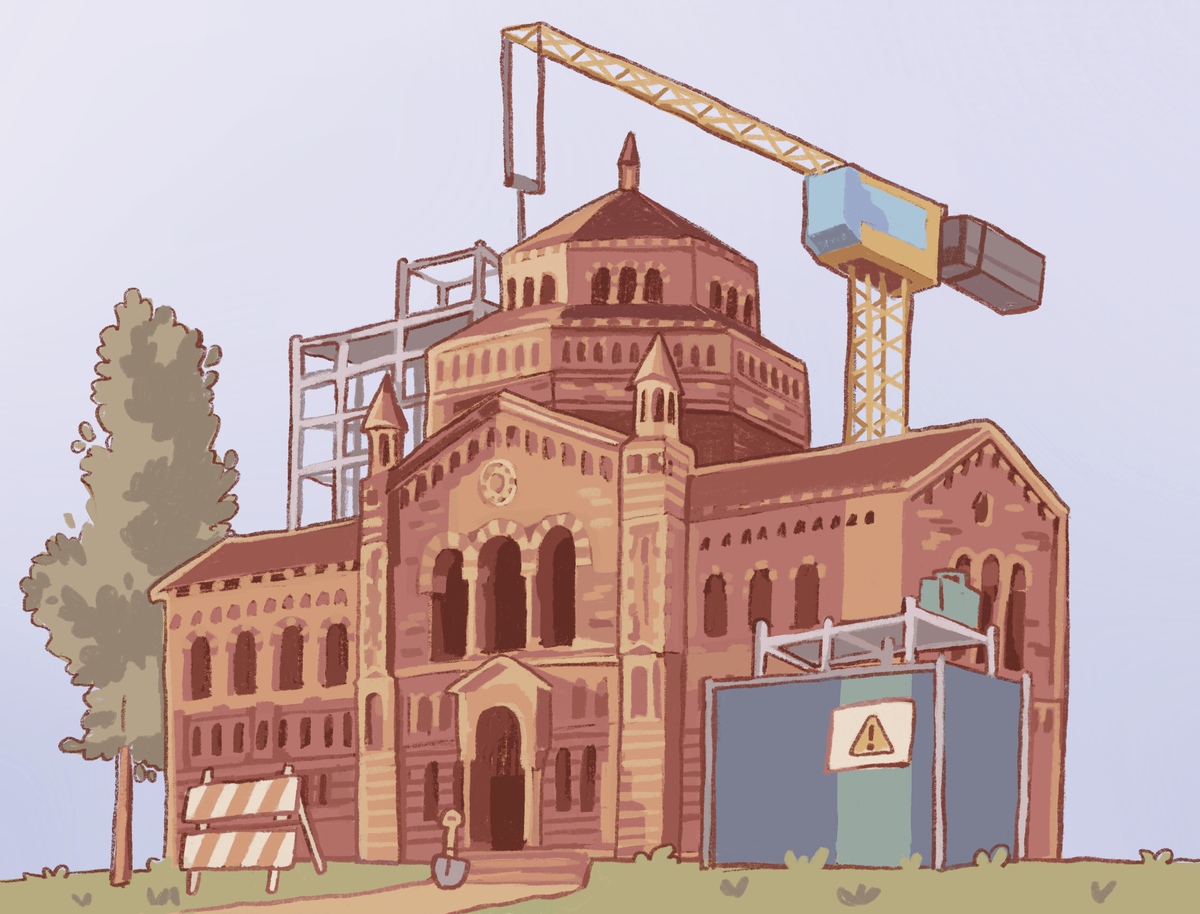
(Julia Chen/Daily Bruin)
By Martin Sevcik
Nov. 5, 2023 8:33 p.m.
This post was updated Nov. 7 at 8:22 p.m.
On January 17, 1994, the 6.7 magnitude Northridge earthquake struck Los Angeles. Over 9,000 people were injured as over 112,000 structures were damaged, including water, heating and communications systems.
UCLA was no exception.
Kerckhoff Hall, Royce Hall, Rieber Hall and other buildings faced substantial damage. The UCLA Medical Center was severely impacted and had to be replaced with the Ronald Reagan UCLA Medical Center.
Seismologists report that an earthquake as strong – if not stronger – than the Northridge earthquake may strike LA in the next few decades. Is UCLA prepared for this dangerous possibility?
Since 1990, UCLA has spent more than $2.8 billion on seismic improvement projects across campus, assessing and renovating buildings to ensure compliance with modern seismic engineering standards. These efforts – which include the ongoing renovation of Powell Library and the Arthur Ashe Student Health and Wellness Center – have drawn praise from structural engineers.
“UCLA has been commendably proactive in terms of trying to understand the extent of the problem and trying to spend money … to try to address these problems,” said Thomas Sabol, an adjunct professor of civil and environmental engineering and a member of the UC Seismic Advisory Board, a group of independent seismic engineers who advise the UC on seismic risk, policy and renovation.
According to the Federal Emergency Management Agency, Los Angeles County faces the highest earthquake risk in the United States. This is the result of numerous active faults – which are fractures in the Earth’s crust where rock movement can generate earthquakes, such as at the boundary between two tectonic plates – in the region. The San Andreas Fault, which runs north to south through most of coastal California, is the primary cause of this high risk.
An earthquake in Southern California could approach similar magnitudes to high-damage earthquakes across the globe, such as the 7.8 magnitude Turkey-Syria earthquake in February. However, stronger inspection and construction practices would likely mean LA would not see the same levels of damage, said John Wallace, a professor of civil and environmental engineering.
“We’re definitely not as vulnerable as some of these other areas that have poor construction,” Wallace said. “But if a large earthquake hits Southern California, we’re not going to escape unscathed. There’s going to be damage.”
For the UC Office of the President, the risk to human life is the primary concern in the event of an earthquake, said Maryann Phipps, a director of the UC Seismic Advisory Board and the former president of the engineering firm Estructure.
This risk to life was the impetus for UCLA’s ongoing seismic renovation programs. In 1985, a UCLA committee report found that an on-campus earthquake could cause up to 2,000 deaths, which resulted in a 1987 plan to upgrade 37 at-risk structures.
Most recently, UCLA Capital Programs analyzed 572 UCLA buildings on campus and throughout LA as part of its 2021 Seismic Safety Building Report. The report, updated in 2022, labeled 21 buildings as high-priority for correction. These buildings include Royce Hall, Schoenberg Hall and several wings of Boelter Hall.
By independently choosing to reexamine and upgrade its campus buildings, UCLA is being more proactive than many private building owners, who may not improve buildings until the law compels them to, Phipps said.
“They’re doing way more than the minimum,” Phipps said. “They’re enacting what I think are pretty sound policies to reduce risk.”
UCLA has initiated the renovation process for some of these high-priority buildings. The Ashe Center began renovations in May 2023, and five companies have been prequalified to conduct seismic renovations on the John Wooden Center, which are estimated to cost $35 million.
The considerations made during a seismic analysis depend largely on the subject. While every building should have certain ideal qualities, the exact standards change on a variety of factors, such as building material and age, Phipps said.
Older buildings, such as near-century-old buildings on UCLA’s campus like Royce Hall, often require specialized analysis. Because they were built using historic building codes and limited seismic knowledge, trying to apply modern building codes directly to historic buildings is like comparing apples to oranges, Phipps added.
Some buildings analyzed in the report – such as Royce Hall and Powell Library – had already seen prior seismic upgrades. Wallace said reevaluating previously retrofitted buildings allows engineers to find further safety improvements.
This process of multiple incremental improvements has affected some buildings more than others. Powell Library’s current renovation, which restricts access to the second floor and a popular nearby walkway, is not the first – or most disruptive – renovation the library has seen.
From 1992 to 1996, the entirety of Powell Library was closed for seismic retrofitting. Forced to find a new home for Powell’s book collection and study spaces, UCLA constructed a two-story aluminum and canvas structure at the base of Janss Steps as a temporary replacement. The unusual building, which became known as “Towell,” was featured in contemporary architectural publications, including on the cover of Architectural Record magazine.
Relocating library collections is not the only challenge UCLA faces when renovating buildings. Phipps said the preservation of research materials, such as oxygen storage tanks or lab animals, may become a priority during the renovation process.
“The research enterprise that occurs at UCLA is one of the prime reasons that it exists,” Sabol added. “Protecting the research enterprise becomes an important consideration when UCLA evaluates how it wants to approach building a new building or improving the performance of a building.”
Seismic engineering is just one component of earthquake safety. Phipps said individual earthquake awareness is another important part of seismic safety. Even in low-risk buildings, people need to know how to protect themselves from earthquake hazards, such as by ducking under something strong to protect themselves from falling objects, she added.
UCLA recently promoted earthquake awareness by participating in the Great ShakeOut on Oct. 19. The event encouraged students across campus to rehearse earthquake safety protocols after they received a test BruinAlert notification.
In the future, UCLA should examine the seismic safety of infrastructure besides campus buildings, such as its transportation and water distribution systems, Wallace said. He added that seismic engineering research, which has received less funding in the years since California’s last major seismic event, could be moving at a faster pace.
Despite his reservations, Wallace said he is optimistic about the future of on-campus seismic safety.
“Could the state of California and UCLA be doing more? Absolutely,” Wallace said. “But I think overall, we’ve been doing a pretty good job.”



